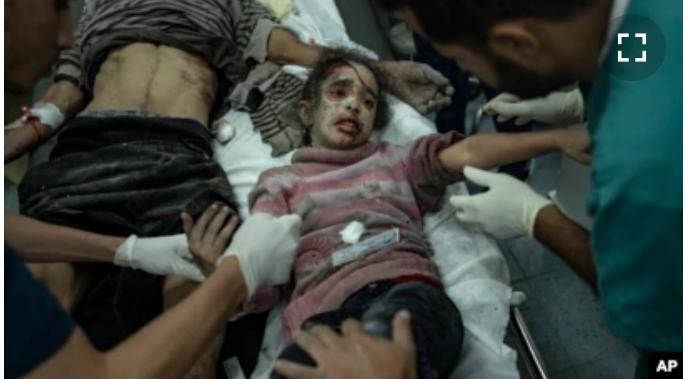
On Thursday, the Israeli military claimed that militants were shooting rockets from the vicinity of Rafah, close to the humanitarian zone.
According to UN representatives, Gaza does not have any secure areas. Over 2 million people live in the territory, and more than 85% of them have already left their homes or shelters—sometimes more than once.
The Security Council was alerted to an approaching “humanitarian catastrophe” in the small enclave along the Mediterranean Sea by U.N. Secretary-General Antonio Guterres, who used an authority that is not often used to encourage members to demand a cease-fire.
Rafah, on the southern border with Egypt, was overflowing with displaced Gazaans, who were told in Israeli pamphlets to leave because they would be safe. However, at least 37 deaths were reported by the Hamas-run health ministry as a result of Israeli airstrikes overnight.
350 Palestinians were killed as Israel targeted Hamas militants in the major towns of the Gaza Strip on Thursday, while thousands of Palestinian civilians were left fleeing the devastation caused by the conflict.
The Jewish state has been urged by the United States, which is Israel’s main ally, to reduce the number of civilian deaths, claiming that too many Palestinians were murdered when it destroyed a large portion of Gaza City and the north. A universal cease-fire, however, would help Hamas, according to the United States, and would probably thwart any attempts by the UN to stop hostilities.
“It is just a question of time.”
There were battles in Gaza City, in the northern portion of the enclave, where Israel concentrated the first phase of its air and ground assault to destroy Hamas, and in Khan Younis, in the southern part of Gaza, where the war has just spread.
The Hamas militants are thought to still be holding roughly 140 captives, but nearly 100 were freed as a result of a week-long cease-fire that ended on December 1.
There are no talks in progress for another fighting halt.
Civilians have been forced further and further south by the conflict, which has interfered with UN relief efforts and prompted repeated alerts of ever worse conditions.
Yahya Sinwar, the leader of Hamas’s Gaza branch, is believed to be in Khan Younis, and Israeli Prime Minister Benjamin Netanyahu stated that “it is only a matter of time until we find him.” Israeli forces are reportedly drawing near to his location.
“Amid constant bombardment by the Israel Defence Forces, and without shelter or the essentials to survive, I expect public order to completely break down soon due to the desperate conditions, rendering even limited humanitarian assistance impossible,” Guterres stated.
Tens of thousands of refugees have reportedly arrived in Rafah in recent days, according to the United Nations. Rafah is the only area of Gaza that has received limited humanitarian aid distributions this week because of the rising conflict further north.
“Impermanently irreversible consequences”
The deteriorating circumstances for civilians, according to U.N. Special Envoy Antonio Guterres, could have “potentially irreversible implications for Palestinians as a whole and for peace and security in the region.”
The proposal by the UN leader was criticised by Israeli Foreign Minister Eli Cohen, who said that a cease-fire demand by Guterres would help Hamas.
Reporters were informed by Israeli government spokesman Eylon Levy that Israel wants the war to finish, but only “in a way that ensures that Hamas can never attack our people again.”
Israel has charged Hamas, a terrorist organisation designated by the United States, of infiltrating hospitals and other civilian places, encouraging people to flee before Israeli bombings, and effectively using civilians as human shields. Hamas has refuted these accusations.
